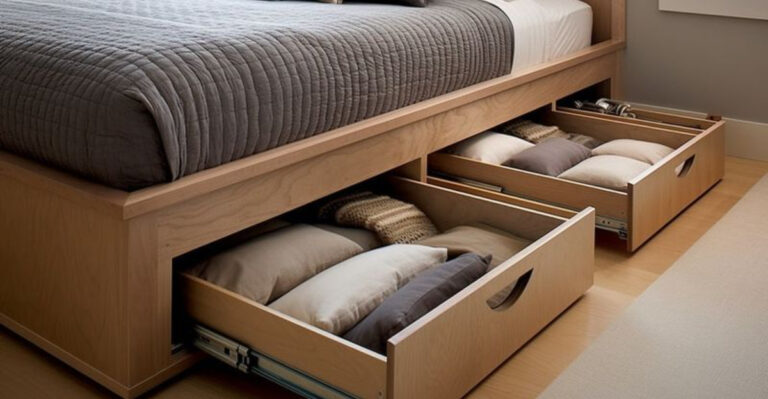18 Things That Always Make Your Basement Look Cluttered
My basement used to feel like a black hole for stuff I didn’t want to deal with, holiday decorations, old furniture, boxes of who-knows-what.
No matter how often I tried to tidy up, the mess always seemed to come back. Sound familiar? The truth is, certain clutter culprits are almost always to blame.
Once I figured out what they were, it became way easier to get things under control. If your basement is more chaotic storage zone than usable space, you’re not alone.
1. Cardboard Box Mountains

Moving boxes from three years ago still hanging around? Those cardboard towers create instant visual chaos.
The brown bulk eats up floor space and screams ‘temporary storage’ even when you’ve been in your home for years. Try collapsing unused boxes or investing in clear plastic bins instead.
Most cardboard attracts moisture anyway, putting your stored items at risk of mold and mildew in basement environments.
2. Holiday Decoration Overflow

Christmas in July happens year-round in cluttered basements! Those tangled lights, fake trees, and seasonal knickknacks create chaos when stored improperly.
Half-open boxes spilling ornaments look messy even when neatly stacked. Color-coded bins for each holiday can transform this situation.
Vacuum-sealed bags for fabric items save tons of space too. Remember that proper holiday storage means you’ll actually find everything when the season arrives!
3. Abandoned Exercise Equipment
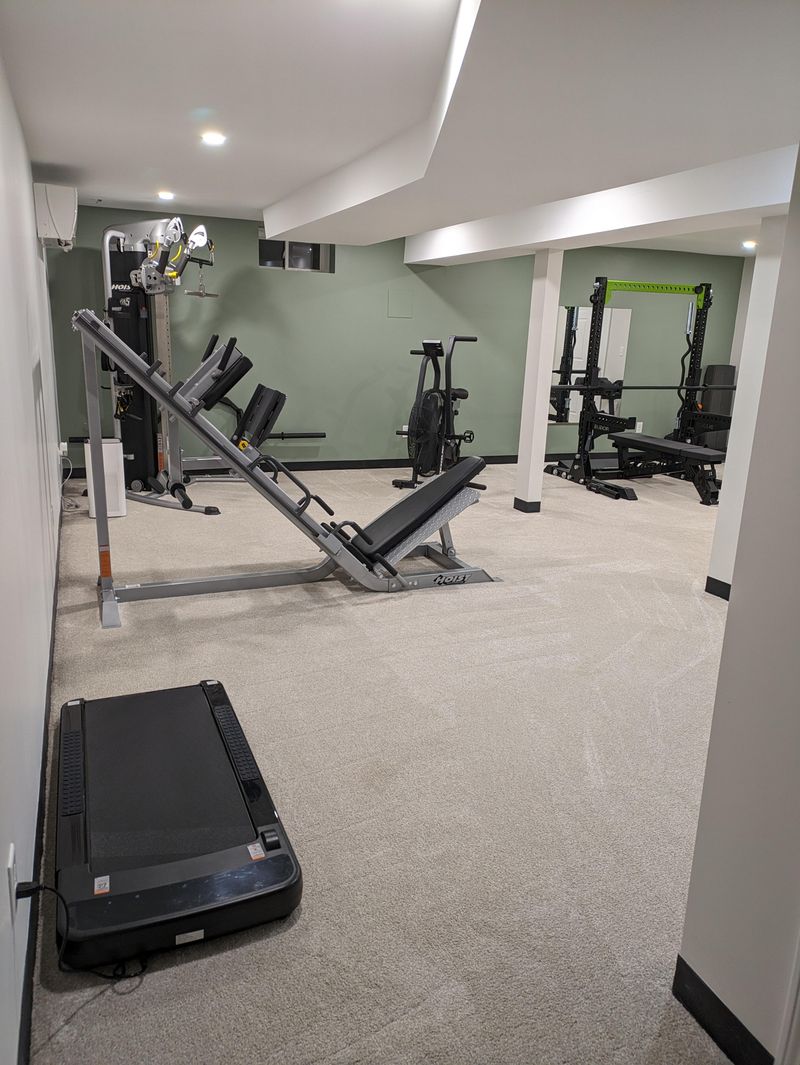
January’s fitness resolution becomes February’s basement eyesore! That treadmill-turned-clothes-hanger or dusty exercise bike creates massive clutter zones.
Bulky fitness gear occupies prime floor space while silently judging your abandoned health goals. If you haven’t touched it in six months, consider selling or donating.
For equipment you actually use, create a proper workout zone instead of letting it float randomly around your basement. Your motivation might even return with an organized exercise area!
4. Mysterious Tool Collection
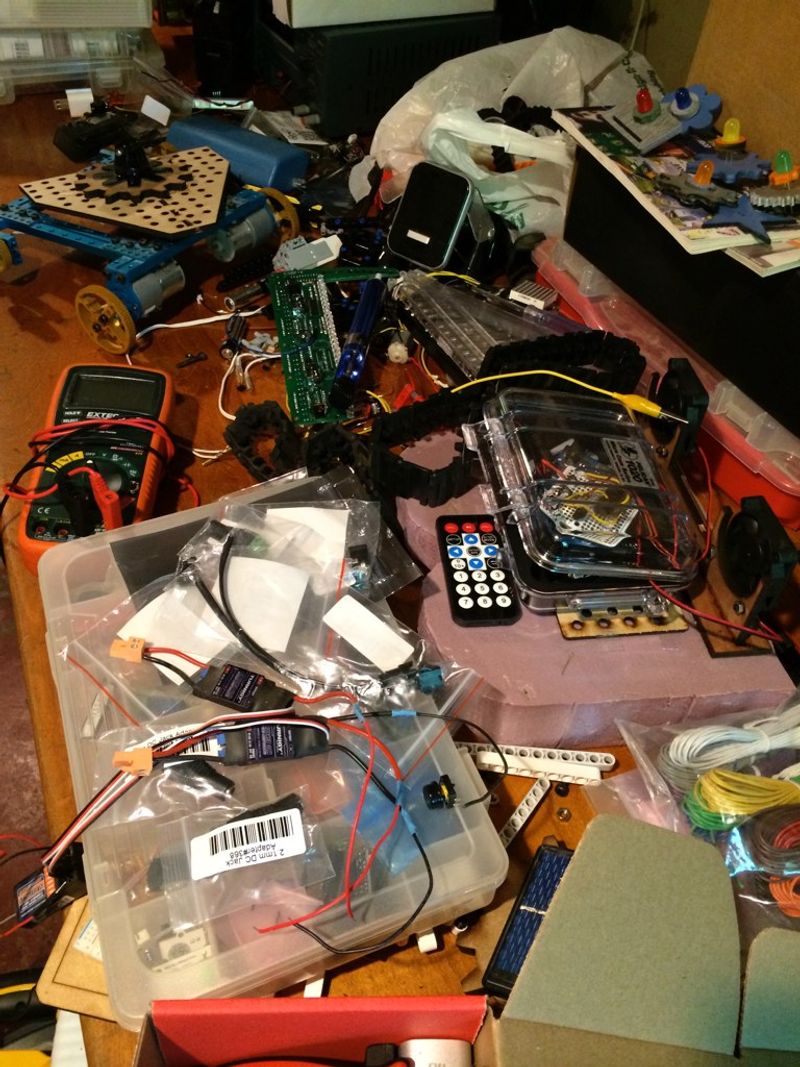
Where did all these hammers come from? Tool multiplication happens in basements nationwide as duplicates pile up without proper organization.
Random screwdrivers, nails, and half-empty paint cans create instant workshop chaos. A simple pegboard system can transform this situation overnight. Sorting fasteners into labeled jars creates both function and visual appeal.
Your weekend projects will become much more enjoyable when you’re not spending hours hunting for that specific wrench!
5. Outgrown Children’s Toys
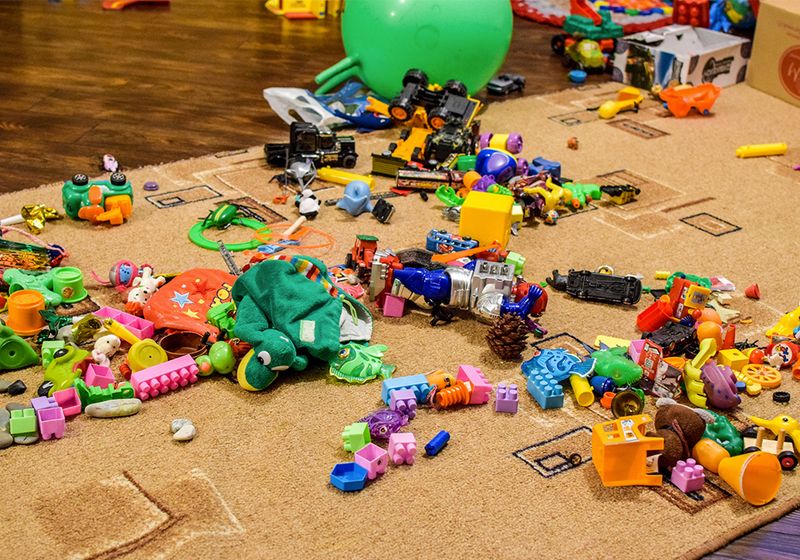
Those giant plastic playsets your kids haven’t touched in years? Major clutter culprits! Emotional attachment makes these particularly difficult to part with, but they consume massive space while collecting dust.
Consider photographing special items before donating them to worthy causes. Keep only the most meaningful pieces in proper storage bins.
Your kids might not even remember half these toys, but another child could treasure them right now!
6. Paperwork Purgatory
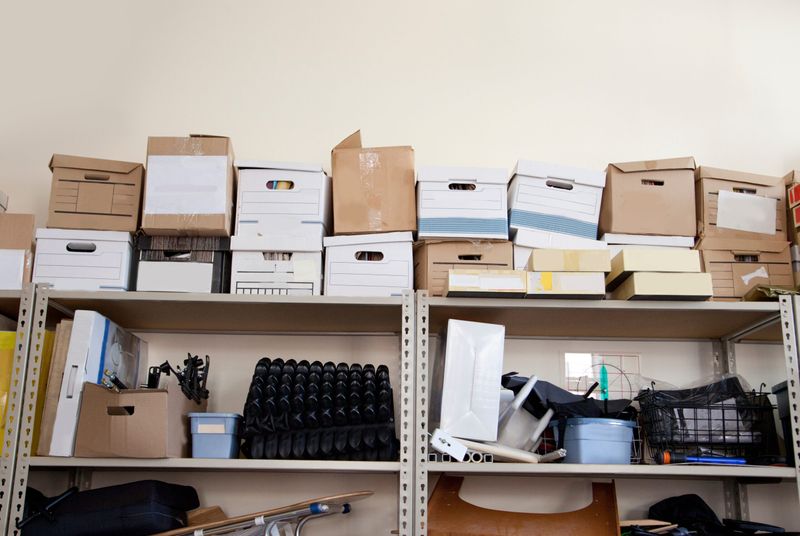
Old tax returns from the 90s? College essays from decades past? Paper multiplies in basements, creating unstable towers of forgotten documents that nobody ever references.
Most papers can be digitized or simply shredded. A single filing cabinet for truly important documents beats random boxes any day.
Remember that moisture in basements can damage important papers, making this storage location particularly problematic for documents you actually need to keep!
7. Forgotten Furniture Projects
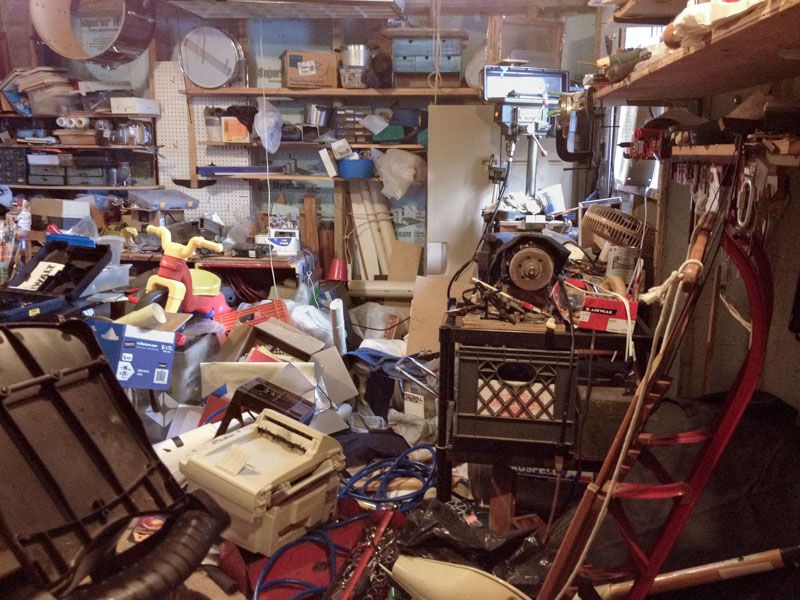
That chair you planned to refinish three summers ago sits accusingly in the corner. Half-finished furniture projects create substantial clutter while reminding you of abandoned creativity.
Set a deadline—finish it this month or let it go! Partially completed projects take up more mental space than physical room.
Sometimes admitting you won’t get to something is the most freeing decision you can make for your basement and your peace of mind.
8. Inherited Family Heirlooms
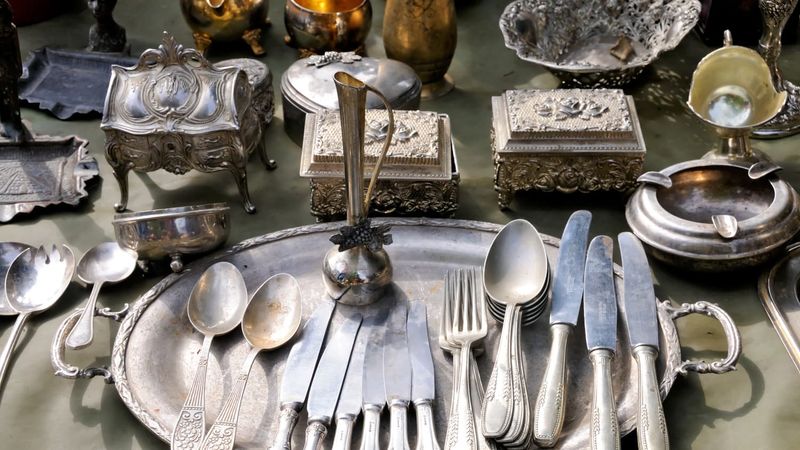
Grandma’s china nobody uses but nobody wants to part with creates prime basement clutter. Family heirlooms often get relegated to underground storage where they’re neither enjoyed nor properly preserved.
Consider displaying truly special pieces upstairs where they add meaning to your daily life. For items you’re keeping solely out of obligation, take photos and pass them to relatives who might actually use them.
Family treasures deserve better than basement exile!
9. Laundry Limbo Land
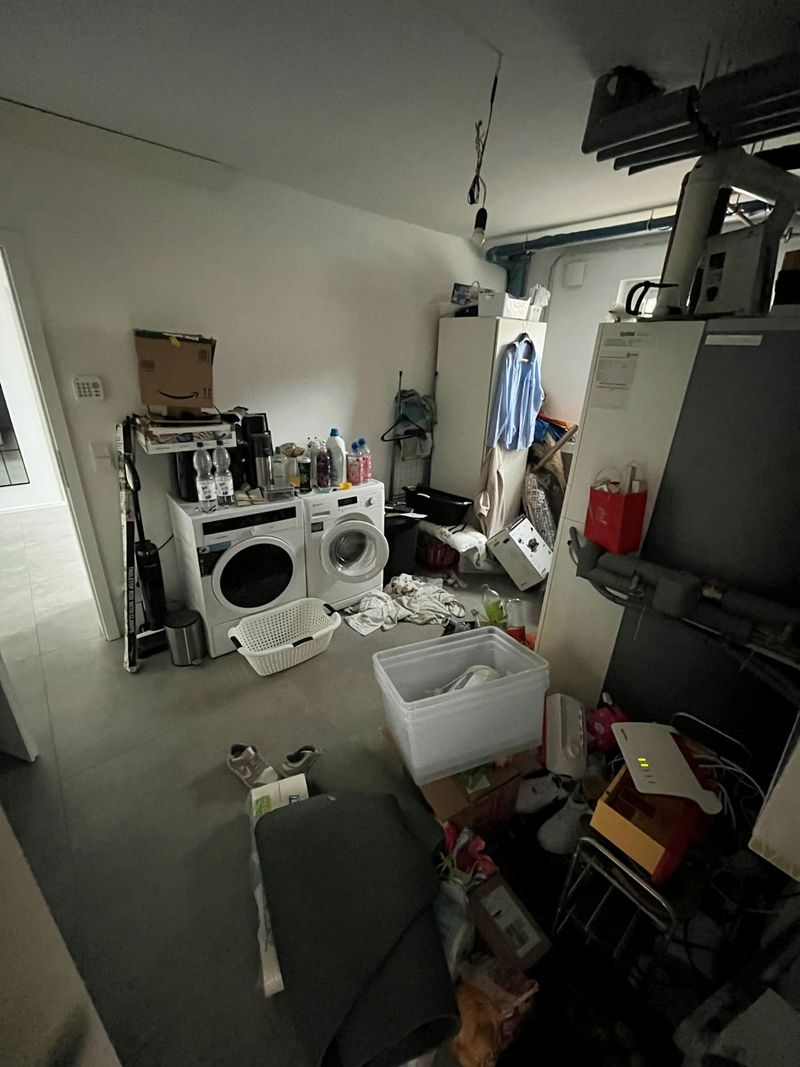
Clean clothes in baskets that never make it upstairs create instant visual chaos. The laundry process often stalls in basements with washing machines, leaving folded piles that become permanent landscape features.
Simple hamper systems with separate bins for each family member can transform this situation. Complete the laundry cycle by immediately bringing clean clothes upstairs.
Your basement will look dramatically neater without the textile mountains dominating the space!
10. Suitcase Graveyards
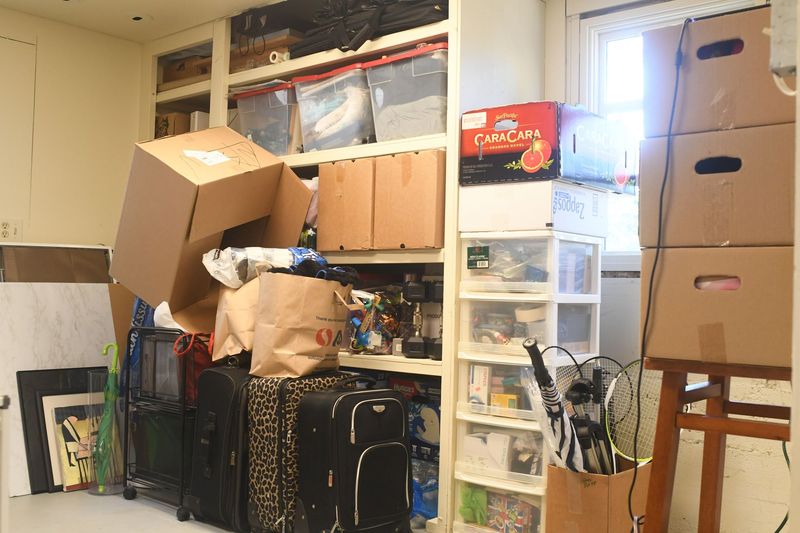
Why do we keep broken luggage? Old suitcases and duffel bags pile up in basements, creating awkward storage problems since they don’t stack well and waste valuable space.
Keep only what you actually use for travel. Nesting smaller bags inside larger ones saves room dramatically.
If you travel rarely, consider borrowing luggage when needed instead of storing rarely-used items year-round in your valuable basement real estate.
11. Sports Equipment Explosion
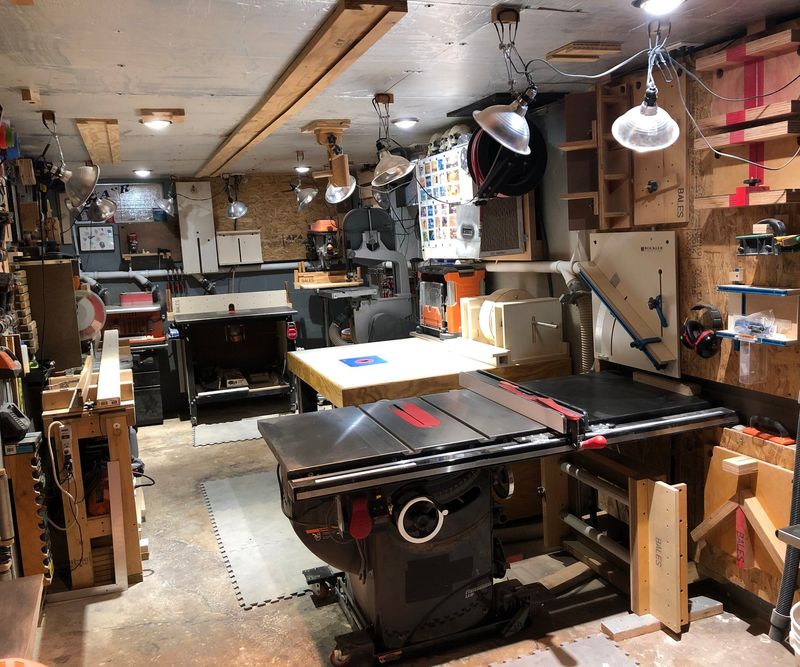
Hockey sticks, baseball bats, and that kayak you used twice create instant visual chaos. Sports gear typically has awkward shapes that don’t store efficiently without proper systems.
Wall-mounted racks can transform this situation by getting items off the floor. Seasonal rotation helps too—store winter gear in less accessible spots during summer months.
Consider whether you truly use everything you’re storing or if some items could bring joy to someone else!
12. Mystery Electronic Graveyard
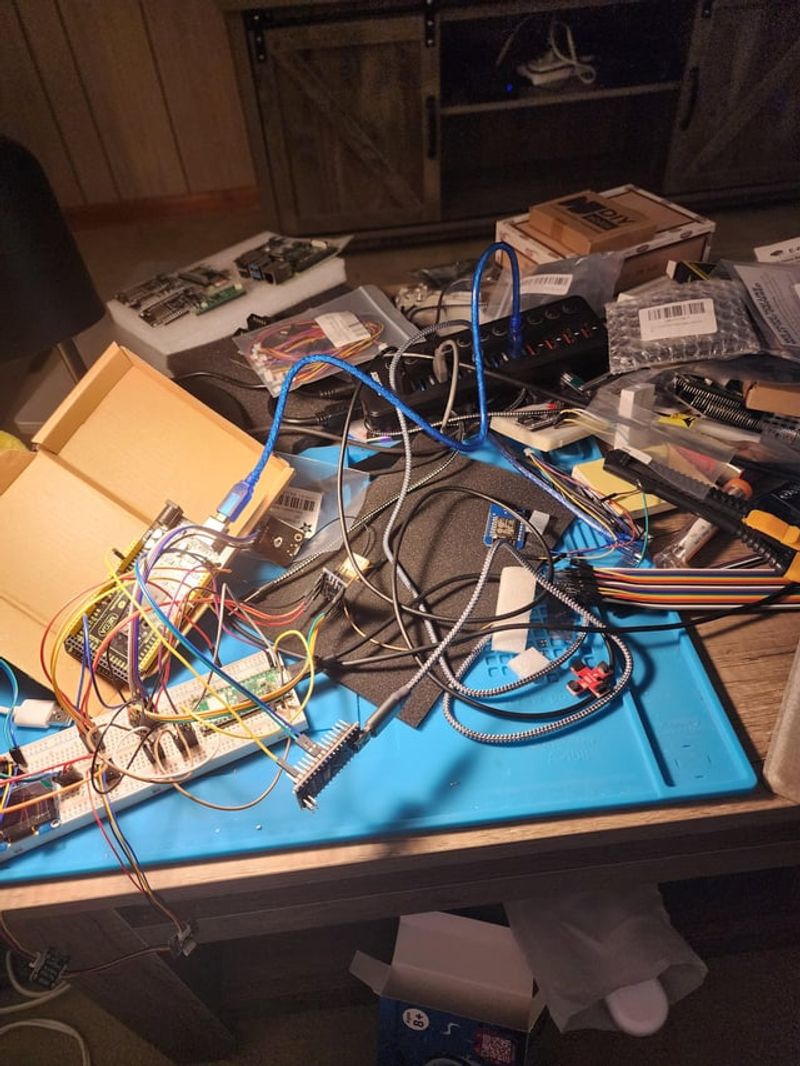
Old TVs, computer monitors, and tangled cords from devices you no longer own create significant basement eyesores. Technology becomes outdated quickly, but we hesitate to dispose of it properly.
Most communities offer electronic recycling events several times yearly. Gather your tech dinosaurs and free up that space!
For cords and smaller items, simple labeled bins prevent the tangled mess that makes your basement look like a 1990s Radio Shack storeroom.
13. College Memorabilia Madness
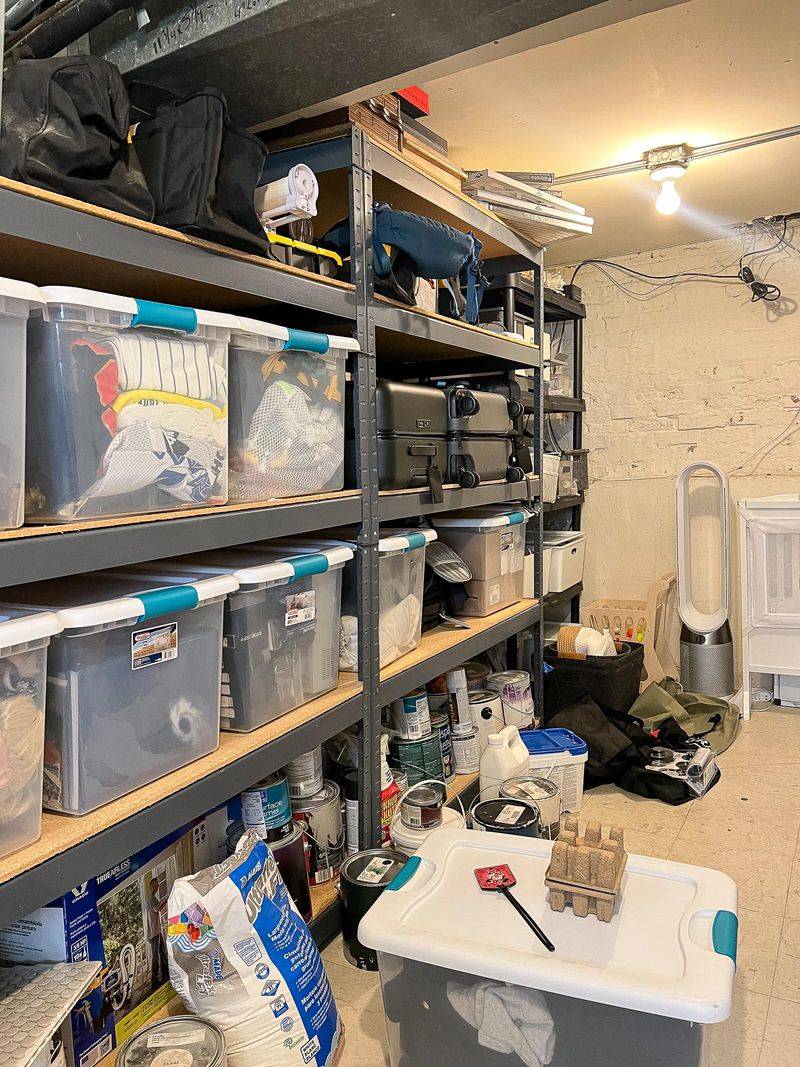
Textbooks you’ll never open again and that giant foam finger from homecoming create nostalgic but unnecessary clutter zones.
College memories often occupy premium basement storage despite rarely being accessed. Create a single memory box for truly special items instead of keeping everything.
Your psychology textbook won’t be referenced again, promise! Photos take up less space than physical objects while preserving the memories that matter to you.
14. Craft Supply Chaos

Half-finished knitting projects and fabric scraps you might use someday create craft clutter that quickly overtakes basement spaces.
Creative supplies multiply mysteriously when stored without systems. Clear bins sorted by project type can transform this situation overnight. Be honest about which hobbies you actually enjoy versus those you’ve abandoned.
Donating unused supplies to schools or community centers frees your space while helping others discover creative passions!
15. Empty Container Collection
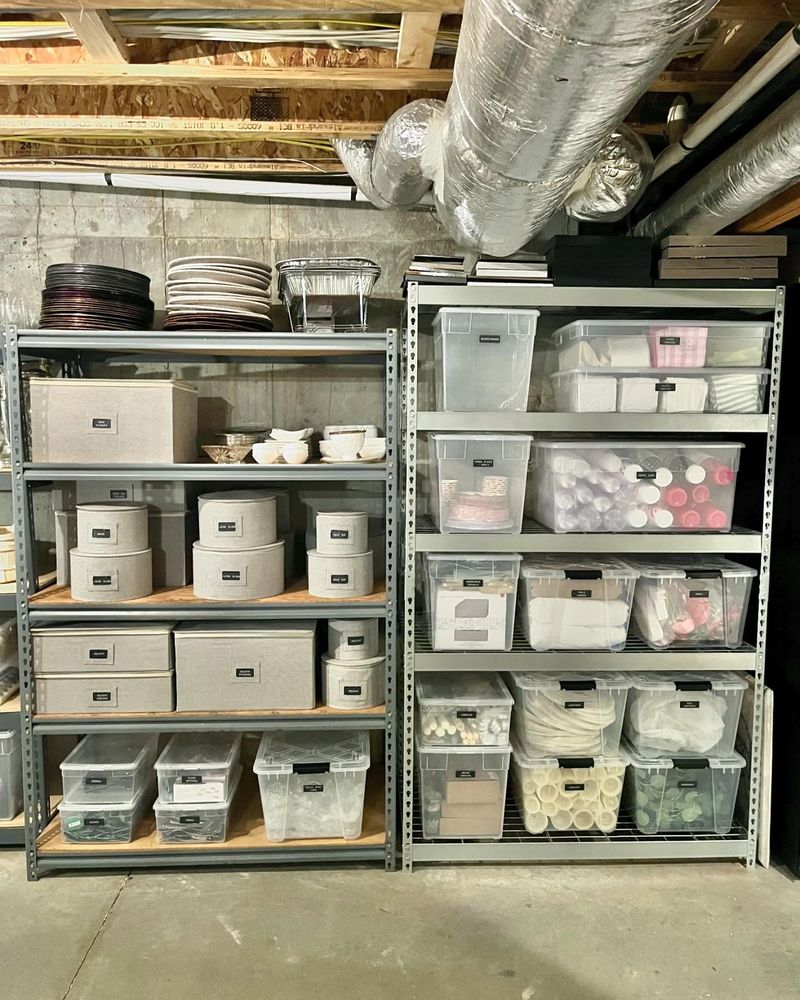
Why do we save so many empty containers? Those plastic tubs from sour cream, yogurt, and takeout create surprising clutter as they multiply in basement storage areas.
Keep only what you actually use for leftovers or organization. Recycle the rest immediately! If you haven’t used those containers within three months, you likely never will.
Your basement deserves better than becoming a plastic tub museum.
16. Forgotten Food Storage
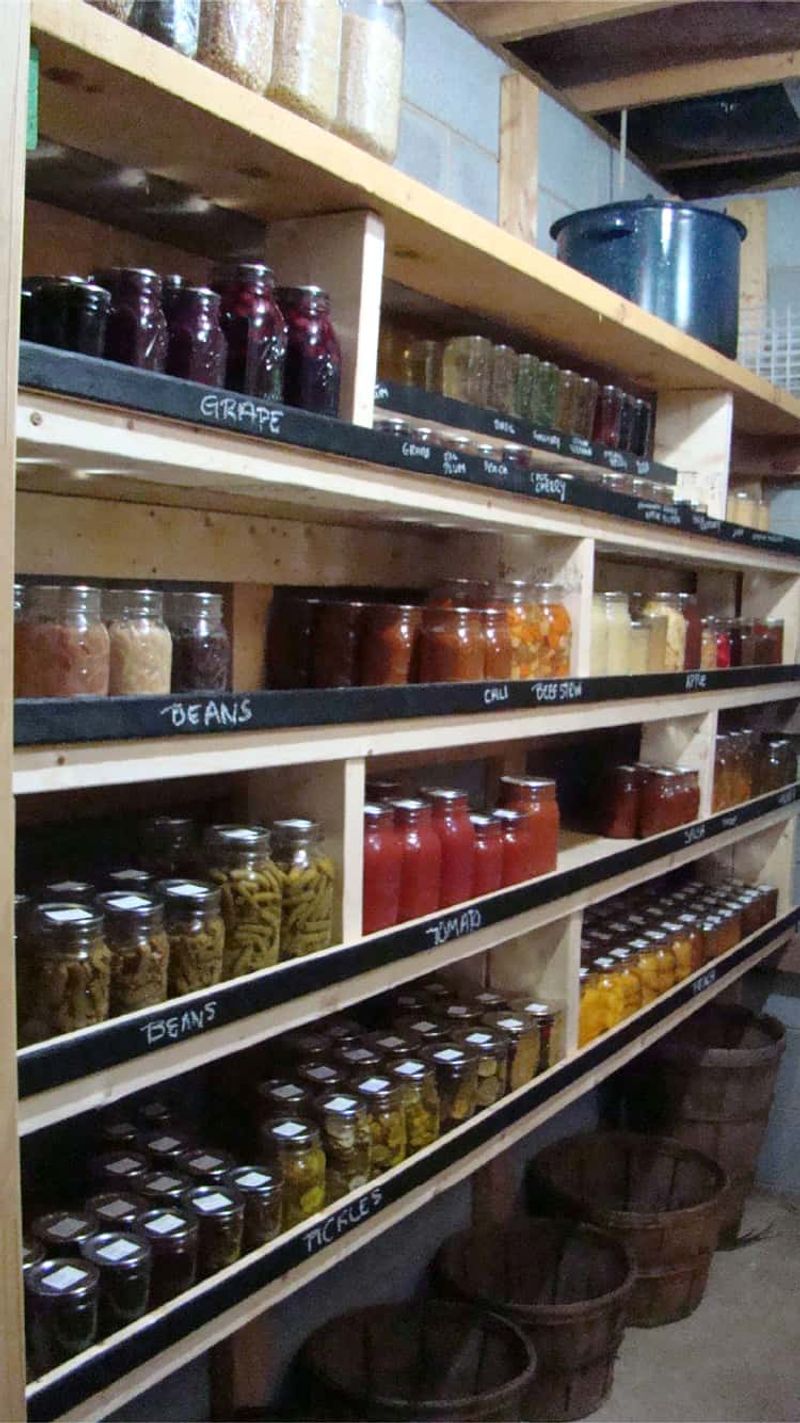
Home canning gone wrong? Those dusty jars of mystery preserves and bulk food purchases create both clutter and potential health hazards in basement spaces.
Check expiration dates regularly and create proper rotation systems for food storage. Basements often have temperature fluctuations that make them less than ideal for certain foods anyway.
Consider whether your apocalypse preparation has gone slightly overboard if you can’t remember when you bought those items!
17. Random Hardware Hoarding
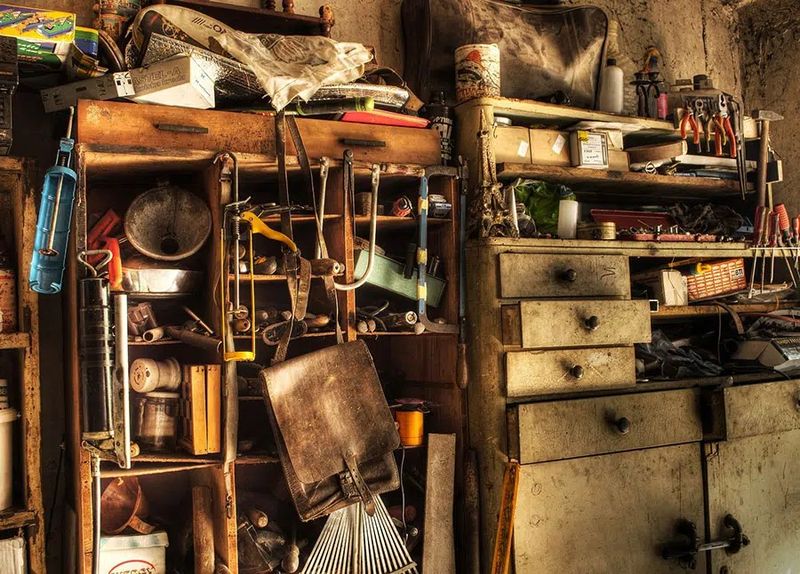
Spare parts from furniture assembly and random screws saved ‘just in case’ create surprising clutter volume.
Those little plastic bags of hardware multiply in junk drawers and basement bins nationwide. Keep only hardware that matches furniture you currently own. Label anything worth saving clearly.
Most people find they never reference these saved parts, yet the mental hurdle of discarding them feels enormous until you experience the freedom of less basement clutter!
18. Out-Of-Season Clothing Mountains
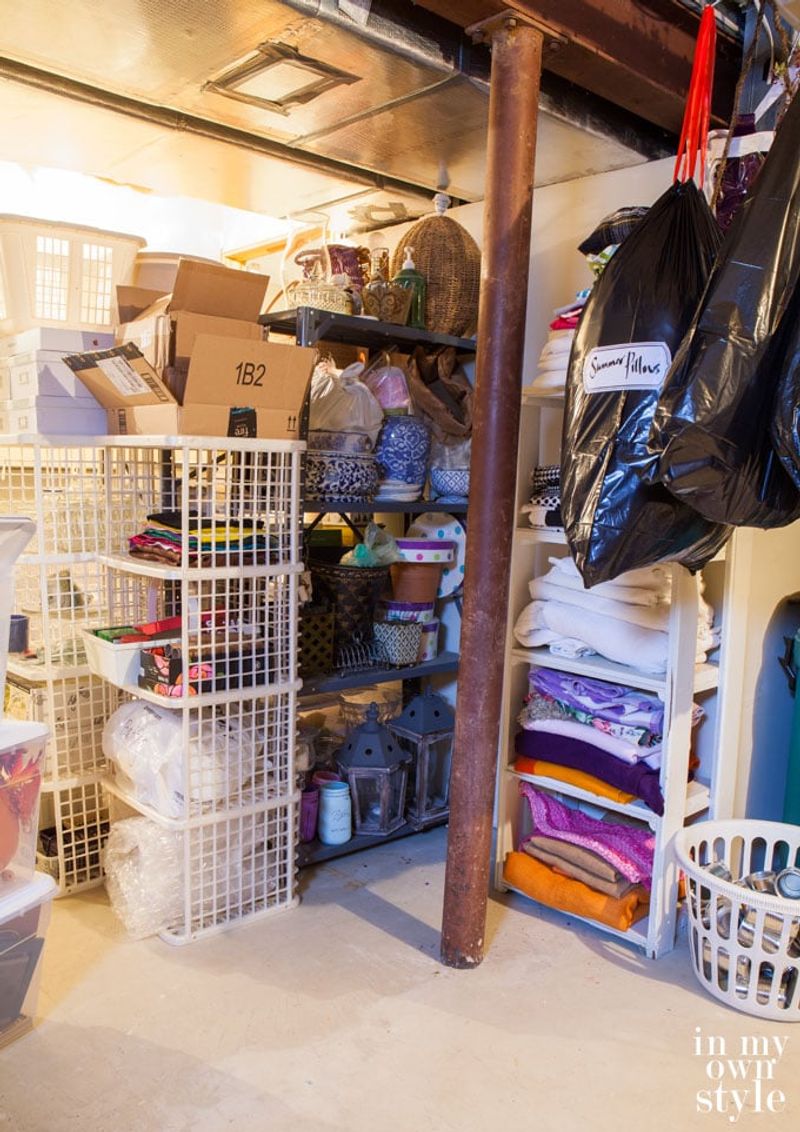
Winter coats in summer and swimsuits in December create textile mountains that dominate basement storage areas.
Without proper systems, seasonal clothing becomes a major space-waster. Vacuum storage bags can reduce volume by 75% for fabric items. Clear bins with detailed labels prevent the need to dump everything out to find that one sweater.
Consider whether you truly wear everything you’re storing or if some items could better serve someone else!


